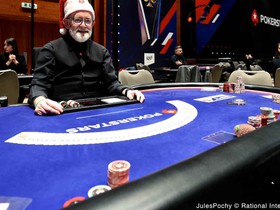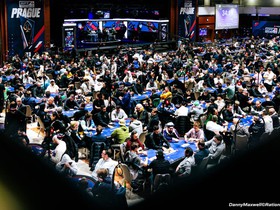- Many believe multiple standout performances in 2025 deserved more recognition.
- Critics argue the current Player of the Year formula favors volume over prestige.
- Expanded WSOP awards would better reflect the festival’s complexity.
- Suggested categories include MVP, Bracelet Leader, and Best Mixed Game Player.
- Recognizing diverse achievements could better honor the series’ evolving landscape.
Each summer, the World Series of Poker (WSOP) becomes the beating heart of the poker world. Hundreds of thousands of players descend upon Las Vegas with the dream of winning one of the coveted gold bracelets on offer. Over the course of seven weeks, the grind is relentless, hundreds of events, thousands of hours of poker, millions in prize money, and, for a select few, a chance to be immortalized.
At the end of it all, there is one prestigious title that stands above the rest: WSOP Player of the Year (POY).
This year, Shaun Deeb claimed that honor—deservedly so. He put up a consistent performance, cashed in 24 events (18 live and 6 online), reached five final tables, and took down Event #79: $100,000 Pot Limit Omaha High Roller for nearly $3 million—his seventh career bracelet.
For his efforts, Deeb receives the WSOP Player of the Year trophy, a seat into the WSOP 2026 Main Event, and a commemorative banner displayed at Paris/Horseshoe in Las Vegas.
Based on the current formula, which rewards consistent in-the-money finishes and final tables across the series, Deeb earned the title fair and square. It also marked his second career POY title, making him only the second player in WSOP history, alongside Daniel Negreanu, to win the award more than once.
Still, many fans and players have been left wondering: Did the POY title truly reflect the most outstanding performance of the summer?
That question comes up for good reason. Two other players had standout summers that arguably rivaled, or even surpassed, Deeb’s run in terms of significance and impact.
Michael Mizrachi, for example, pulled off what many consider the single most impressive feat of the series: winning both the Main Event and the Poker Players Championship, widely regarded as the toughest tournament in poker.
These are the crown jewels of the WSOP. To win both in the same year is unheard of. In any other year, this run might have been considered enough to define the series. Rightly so, he was immediately inducted into the Poker Hall of Fame, under special circumstances.
Then there’s Benny Glaser, who claimed three bracelets this summer. That’s a rare accomplishment in modern WSOP history, especially considering the competitiveness and depth of today’s fields. And not to forget Martin Kabrhel, who also had a great run this year.
All these players had remarkable summers. But only one walked away with the POY title.
Ongoing WSOP Player of the Year Formula Debate
It is no surprise that the WSOP Player of the Year formula is once again under scrutiny, a debate that seems to resurface every year. The scoring system has been tweaked multiple times over the past decade, yet dissatisfaction remains, particularly when standout performances don’t translate into POY points.
On the popular 2p2 poker forum, one user remarked, “Benny not winning seems more egregious than Grinder not winning.” Another pointed to the flaws in how cashes are counted: “Mincashes have been made pretty worthless by the current POY formula. Deeb had the most live cashes at the 2025 WSOP with 18, but only 10 counted, and none were mincashes.”
The same user noted that Jake Schwartz, who recorded the second-most cashes with 17, didn’t even crack the Top 100 in POY points.
“It’s clear the POY points are structured for who can pound the most ~min-cashes by playing almost the whole schedule, which I think is a bit of a joke,” another user commented.
Even Phil Hellmuth, holder of a record 17 WSOP bracelets, joined the conversation, publicly calling the POY outcome flawed.
“I don’t think any professional poker player believes that the right person won Player of the Year,” he said in a video posted after the series.
“Mizrachi should have been Player of the Year. I think that 90% of the poker world believes that. Maybe the other 10% thinks Benny Glaser should have won Player of the Year. One of those two for sure should have won it,” Hellmuth further said.
Not everyone was critical of Deeb’s win. Over on Reddit, one user defended the outcome.
“The award would be pointless if it were weighted heavily against two events. Deeb is a deserving winner. I’m sure he would rather have Grinder’s results though.”
The debate over how the WSOP calculates Player of the Year is not new. The current system rewards volume, consistency, and deep runs but not necessarily prestige. That is why someone can win the Main Event and the PPC and still fall short.
It begs the question: Should one single award determine the best performer in such a massive, diverse festival?
Maybe not.
Time for More Awards
Perhaps it is time for the WSOP to rethink how it recognizes achievement across the series. With more than a hundred bracelet events and hundreds of thousands of players taking part, both online and live, the idea of a single Player of the Year title feels increasingly outdated.
When the WSOP was a smaller affair, with a few dozen events and a few hundred dedicated grinders, one POY award may have been enough. But the landscape has changed. Today, players compete across vastly different formats, structures, and field sizes. It is no longer a one-size-fits-all race.
There will always be situations—like this year—where multiple players put up historic performances. Shaun Deeb won POY under the current system, and that’s fully justified. But Michael Mizrachi and Benny Glaser had equally monumental runs.
Here are a few categories that could add more dimension to the WSOP leaderboard:
- Most Valuable Player (MVP) — For the player who made the biggest impact, with prestige weighted more than volume. Mizrachi would clearly earn this for 2025.
- Bracelet Leader of the Year — For the player who won the most bracelets. In 2025, that’s Glaser.
- Best Mixed Game Player — Recognizing players who dominate non-Hold’em formats, often overlooked in a Hold’em-heavy spotlight.
- Best Female Player — To celebrate top performances by women, encouraging visibility and growth.
- Best Senior Player — For those crushing the 50+ events or making deep runs in open fields.
- Best International Player — For standout players from outside the US, based on deep runs and final tables.
Final Thoughts
Adding more award categories isn’t about giving everyone a trophy; it’s about acknowledging the depth, variety, and scale of what the modern WSOP has become. Of course, expanding the number of awards might dilute the singular prestige of the Player of the Year title to some degree. But in a festival where hundreds of thousands compete, it feels far more appropriate to honor multiple standout performances rather than force one narrative onto a very complex story.
Shaun Deeb earned the POY title, and no one can take that away from him. Most major sports—like Football, Basketball, Cricket, and Baseball—long ago recognized that a single award isn’t enough.
WSOP, with its 100+ events and hundreds of thousands of players, may now be at a similar crossroads. One title might have sufficed in the past, but in today’s era, it may be time to celebrate multiple forms of excellence, not just one.







